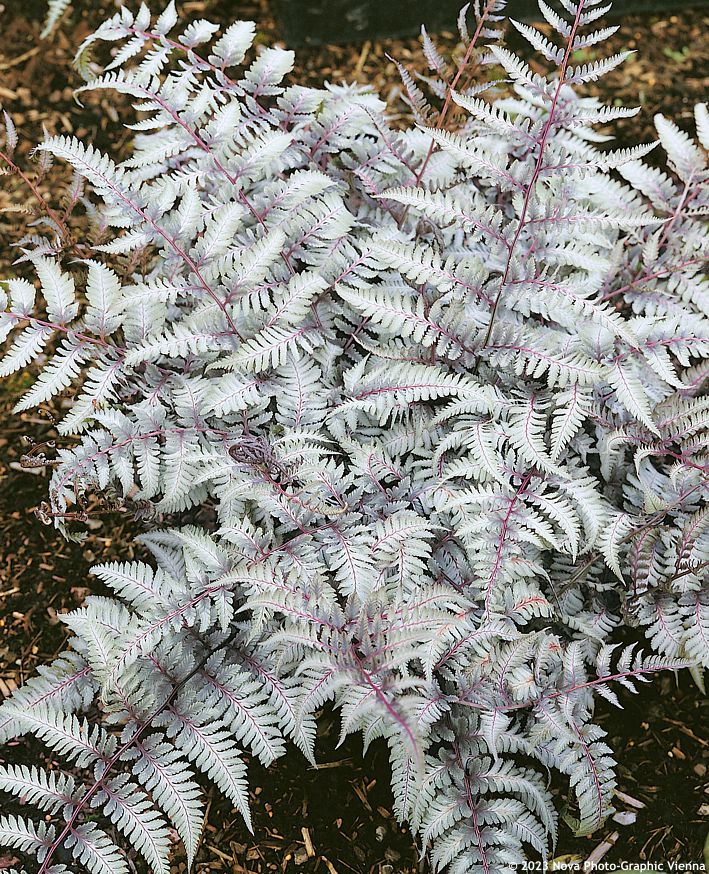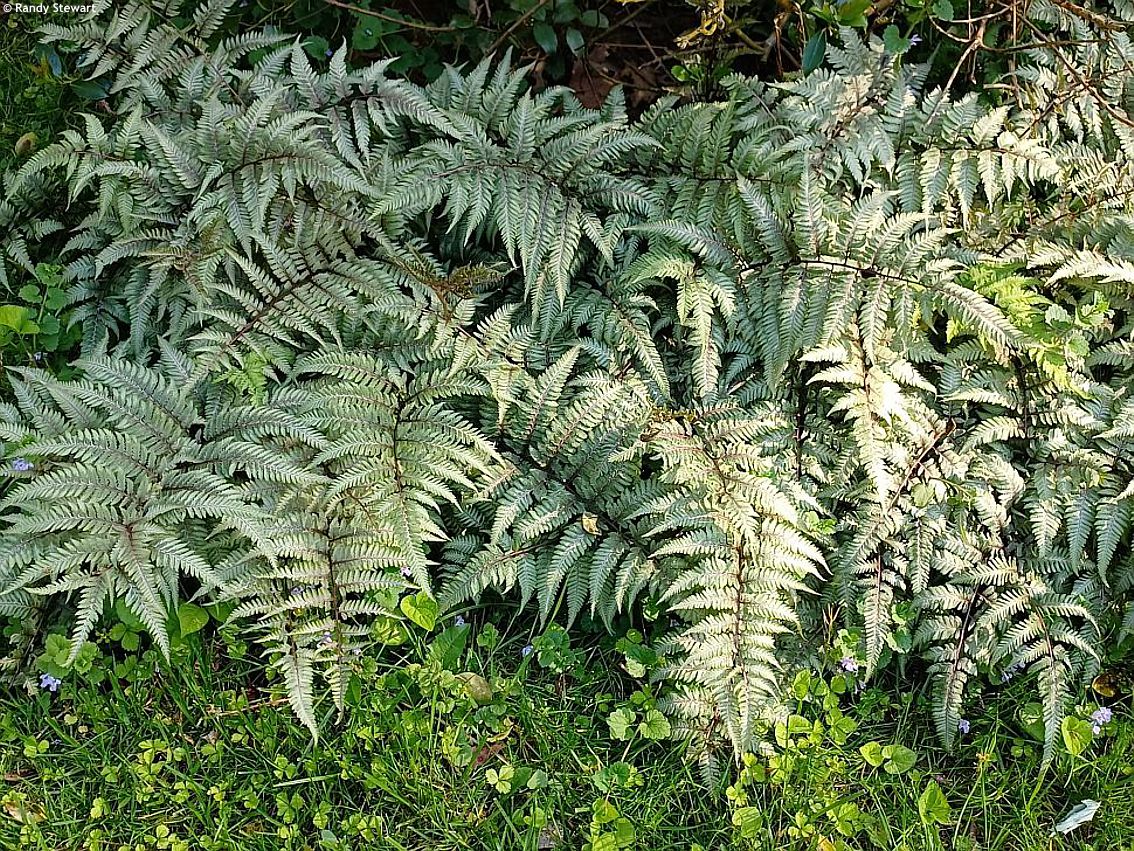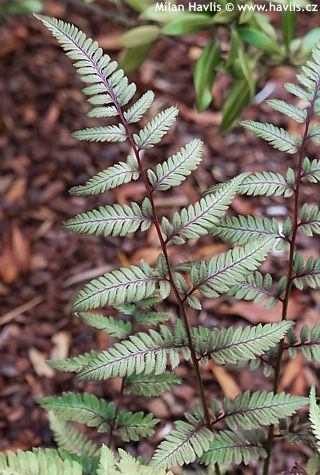Athyrium niponicum 'SILVER FALLS' Japanese painted fern
size/type
low or groundcovering,low or groundcovering
usual height
0,3-0,5m
usual width
0,3-0,5m
leaves
semi-deciduous broadleaf
colour of leaves
flowers
insignificant or non-blooming
location
semi-shade to shade
soil moisture requirements
evenly moist (dislikes drought)
USDA zone (lowest)
4 (down to -34°C)
winter protection
for zone 5+6

for zone 7

categorized
Athyrium
Japanese painted fern gained its specific epithet niponicum from Nippon which is the Japanese term for Japan (日本). It is a deciduous species with attractive fronds with fine leaflets of unique colours. Its seeds are variable and plants risen from seeds can differ from the parent. Spotting such spontaneous mutation gives rise to selecting new varieties. It slowly spreads with short rhizomes and under ideal conditions forms dense colonies used as a very decorative groundcover.Description of the plant:
Silver Falls is a Japanese painted fern variety named after a waterfall in Oregon, USA. It produces nearly silver foliage with less conspicuous magenta purple midribs and stems whose colour diminishes as the leaves mature. Young leaves show some portion of light green before they turn silvery grey. Leaf margins are finely serrated.Japanese painted ferns can be found in almost all landscape types except for xeriscape. They are commonly used in Japanese gardens, but they also find use in cottage woodland gardens. They look great in urban landscapes in semi-shaded front yards among evergreen shrubs such as azaleas and pieris, and will offer elegance in modern containers in a minimalistic architecture. And finally, they will make a beautiful companion plant in a colourful semi-shaded perennial border alongside hostas, coral bells, brunneras, anemones, liriopes and similar.
Japanese painted fern is deciduous, so remove all foliage above ground level after winter. The ideal location is a partial shade, though, it will grow in full shade, too. It needs neutral to slightly acidic, humus-rich, well-drained but constantly moist soil. Even moisture will ensure the continuous formation of new fronds of leaves, on the other hand, drought will make the plant lose colour and drying off the tips. Hardy to about -34 °C. (USDA zone 4).
Last update 05-09-2009; 20-12-2022
QUICK PRICE OVERVIEW
CURRENTLY SOLD OUT
WANT TO TRY A SIMILAR PLANT?


















